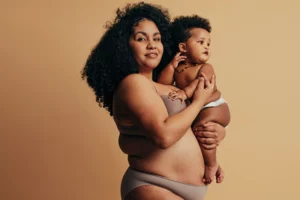Hear Her campaign to make sure expectant moms are heard
The Centers for Disease Control (CDC) has launched a new campaign to fight against maternal mortality and help moms be heard.
The Hear Her campaign seeks to teach new and expectant mothers – as well as their friends and family – how to recognize early warning signs of potentially life-threatening conditions during and after pregnancy. The campaign also aims to improve communication between patients and their healthcare providers.
“A woman knows her body,” Dr. Wanda Barfield, Director of CDC’s Division of Reproductive Health, states for the campaign’s website. “Listening and acting upon her concerns during or after pregnancy could save her life.”
More than 700 women die each year in the United States from complications related to pregnancy or delivery. Two-thirds of those deaths could be prevented.
American Indian, Alaska Native, and Black women are two to three times more likely to die of pregnancy-related causes than white women.
Furthermore, as many as 50,000 women experience severe, unexpected pregnancy-related problems that have a long-term impact on their overall health.
Hear Her offers resources to help pregnant and postpartum women and the people in their support system recognize early signs of pregnancy complications and act fast.
According to the CDC, urgent maternal warning signs can happen up to a year after pregnancy. Some signs to watch for—and seek medical care for immediately— include:
- Headache that won’t go away or gets worse over time
- Dizziness or fainting
- Changes in your vision
- Fever of 100.4 degrees or higher
- Extreme swelling of your hands or face
- Thoughts about harming yourself or the baby
- Trouble breathing
- Chest pain or fast-beating heart
- Severe nausea or vomiting
- Severe and persistent belly pain
- Baby’s movement stopping or slowing down during pregnancy
- Vaginal bleeding of fluid leaking during pregnancy
- Vaginal bleeding or discharge after pregnancy
- Overwhelming tiredness
Visit the Hear Her website to learn more about all of these warning signs and to explore other resources such as conversation guides and videos of real women’s stories and experiences.




